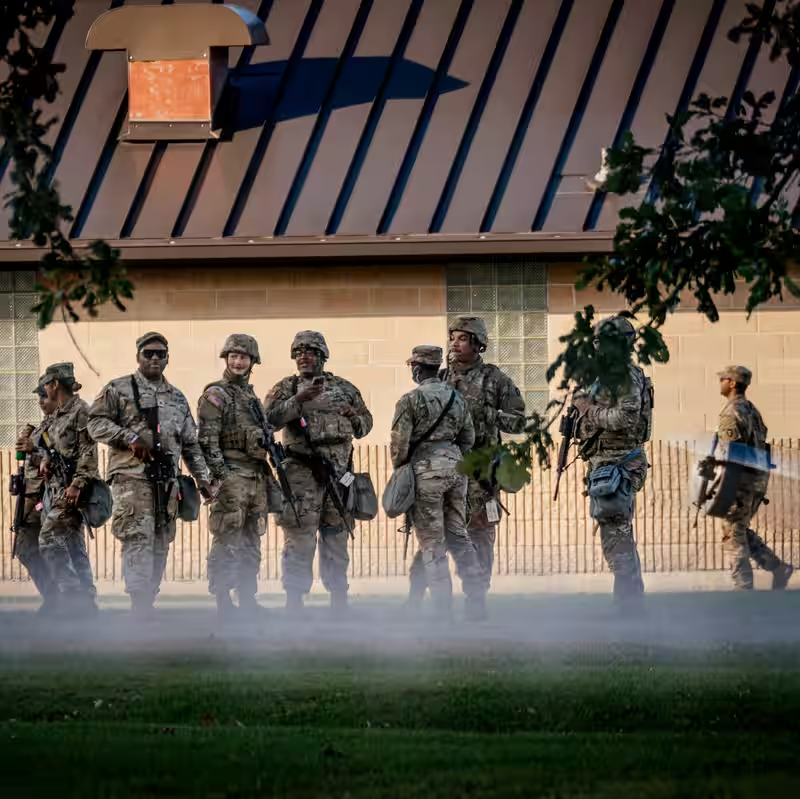Table of Contents
- Trump Deploys National Guard Despite Local Opposition
- Supreme Court Seeks Clarification on Legal Authority
- Chicago Becomes Flashpoint in Federal-State Clash
- Key Legal Questions Hanging Over the Case
- Broader Implications for Executive Power
- Sources
Trump’s National Guard Deployment Sparks Legal Firestorm
In a move that has reignited tensions between federal and state governments, former President Donald Trump has ordered National Guard troops into Chicago, Los Angeles, Portland, and Washington, D.C.—over the strong objections of local and state officials. The controversial deployments, justified by the administration as necessary to protect federal facilities from “prolonged, coordinated, violent resistance,” have now landed before the U.S. Supreme Court.
The National Guard deployment centers on a federal immigration processing center in Broadview, Illinois—a Chicago suburb where regular protests have occurred. According to Justice Department filings, demonstrators have allegedly hindered federal law enforcement’s ability to carry out immigration operations, prompting Trump to invoke emergency powers under the Insurrection Act.
Supreme Court Asks for More Information
On Wednesday, the Supreme Court declined to immediately rule on the legality of the Chicago deployment. Instead, the justices issued an order requesting additional briefing from both the Trump administration and Illinois officials by November 17.
Specifically, the Court asked the parties to clarify whether the term “regular forces” in federal law refers exclusively to active-duty U.S. military personnel—and how that interpretation affects the president’s authority to deploy National Guard units without state consent.
Chicago Standoff Highlights Federal-State Tensions
Illinois Attorney General Kwame Raoul and the City of Chicago filed a joint lawsuit challenging the deployment, arguing that protest activity has never disrupted federal operations. Court records show the Broadview facility remains open, and immigration arrests continue statewide.
“No protest activity in Illinois has rendered the president unable to execute federal law,” the state’s legal team wrote. Local leaders warn that militarizing urban areas could escalate tensions rather than restore order.
What Does ‘Regular Forces’ Really Mean?
The core legal dispute hinges on a decades-old provision in 32 U.S.C. § 502(f), which allows the president to federalize the National Guard under two conditions: (1) if there’s a “rebellion against the authority of the United States,” or (2) if the president “is unable with the regular forces to execute the laws.”
The Seventh Circuit Court of Appeals—comprising judges appointed by both Democratic and Republican presidents—recently blocked the deployment, citing “insufficient evidence” of any functional obstruction to federal law enforcement.
Now, the Supreme Court must decide whether “regular forces” includes federal agents like ICE officers and Border Patrol—or only active-duty military troops. The answer could reshape presidential emergency powers for generations.
Why This Case Matters Beyond Chicago
Legal scholars warn that a broad interpretation of executive authority could set a dangerous precedent, enabling future presidents to deploy troops domestically without state approval—even in the absence of true insurrection.
“This isn’t just about Chicago—it’s about the balance of power in our federal system,” said Professor Elena Martinez, a constitutional law expert at Georgetown University. “If the Court greenlights this, we’re opening the door to routine military presence in American cities during political protests.”
With responses due by November 17, a final ruling is unlikely before year’s end. In the meantime, National Guard units remain stationed outside the Broadview facility under temporary court allowances.




